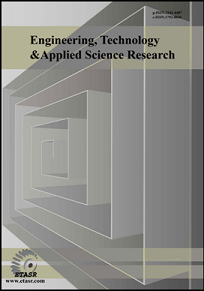Implementation of a Broad Range Smart Temperature Measurement System using Auto-Selected Multi-Sensor Core in LabVIEW Environment
Abstract
A conventional temperature sensing system employs a single transducer to convert temperature into an electrical signal. Such a system suffers from the limitation of the sensing range of the sensing device thereby affecting its accuracy and its capability. Therefore to make an accurate measurement in a typically abrupt temperature varying environment, a broad range high precision sensor is required. In this paper, an attempt is made to implement a wide spectrum temperature measurement system using auto-selected multi-sensor core in LabVIEW. This multi-sensor core can be composed of a set of different sensors having different capabilities to measure different temperatures ranges. These sensors are auto-selected by the program depending on the environment. This concept may be useful for space applications or it can also be useful for the monitoring of temperature and pressure in an oil/gas transportation or supply by means of underground/sea pipeline system or in a refinery plant. Further, this may also be applied for high precision temperature sensing in magnetic resonance imaging system applications.
Keywords:
broad spectrum temperature range measurement, multi-sensor core, LM-35, thermister, RTD, auto-select sensor, linearization, LabVIEWDownloads
References
A. A. Khan, M. A. Al-Turaigi, A. R. M Alamoud, “Linearized thermistor thermometer using an analog multiplier”, IEEE Transactions on Instrumentation and Measurement, Vol. 37, No. 2, pp. 322-323, 1988 DOI: https://doi.org/10.1109/19.6078
S. Pradhan, S. Sen, “An improved lead compensation technique for three-wire resistance temperature detectors”, IEEE Transactions on Instrumentation and Measurement, Vol. 48, No. 5, pp. 903-905, 1999 DOI: https://doi.org/10.1109/19.799644
P. R. Nagarajan, B. George, V. J. Kumar, “A linearizing digitizer for wheatstone bridge based signal conditioning of resistive sensors”, IEEE Sensors Journal, Vol. 17, No. 6, pp. 1696-1705, 2017 DOI: https://doi.org/10.1109/JSEN.2017.2653227
L. Smutny, “Smart Temperature Sensors for Measurement and Control”, International Scientific Conference of FME, Session 4: Automation Control and Applied Informatics, Ostrava, Poruba, 2000
S. M. A. Ghaly, S. S. Al-Sowayan, “A high B1 field homogeneity generation using free element elliptical four-coil system”, American Journal of Applied Sciences, Vol. 11, No. 4, pp. 534-540, 2014 DOI: https://doi.org/10.3844/ajassp.2014.534.540
S. M. A. Ghaly, K. A. Al-Snaie, S. S. Al-Sowayan, “Design and testing of radiofrequency spherical”, Modern Applied Science, Vol. 10, No. 5, pp. 186-193, 2016 DOI: https://doi.org/10.5539/mas.v10n5p186
S. M. A. Ghaly, K. A. Al-Snaie, M. O. Khan, “Spherical and improved helmholtz coil with high B1 homogeneity for magnetic resonance imaging”, American Journal of Applied Sciences, Vol. 13, No. 12, pp. 1413-1418, 2016 DOI: https://doi.org/10.3844/ajassp.2016.1413.1418
S. M. A. Ghaly, K. A. Al-Snaie, A. M. Ali, “Design and modeling of a radiofrequency coil derived from a helmholtz structure”, Engineering, Technology & Applied Science Research, Vol. 9, No. 2, pp. 4037-4043, 2019 DOI: https://doi.org/10.48084/etasr.2683
Z. P. Nenova, T. G. Nenov, “Linearization circuit of the thermistor connection”, IEEE Transactions on Instrumentation and Measurement, Vol. 58, No. 2, pp. 441-449, 2009 DOI: https://doi.org/10.1109/TIM.2008.2003320
A. N. Hosny, I. A. E. Moaty, “Development of a linear temperature measuring circuit using a thermistor”, Modelling, Measurement & Control A, Vol. 63, No. 1-3, pp. 25-30, 1995
C. Renneberg, T. Lehmann, “Analog Circuits for Thermistor Linearization with Chebyshev-Optimal Linearity Error”, 18th European Conference on Circuit Theory and Design, Seville, Spain, August 27-30, 2007 DOI: https://doi.org/10.1109/ECCTD.2007.4529745
Y. J. Wang, L. K. Yang, H. L. Jin, P. Gao, S. J. Zhang, “An Optimal Linearization Method of Parameter Design for NTC Thermister Interface Circuit”, International Conference on Mechanics Design, Manufacturing and Automation, 2016 DOI: https://doi.org/10.12783/dtetr/mdm2016/4882
S. K. Sen, T. K. Pan, P. Ghosal, “An improved lead wire compensation technique for conventional four wire resistance temperature detectors (RTDs)”, Measurement, Vol. 44, No. 5, pp. 842-846, 2011 DOI: https://doi.org/10.1016/j.measurement.2011.01.019
S. M. A. Ghaly, “LabVIEW Based Implementation of Resistive Temperature Detector Linearization Techniques”, Engineering, Technology & Applied Science Research, Vol. 9, No. 4, pp. 4530-4533, 2019 DOI: https://doi.org/10.48084/etasr.2894
F. Reverter, J. Jordana, M. Gasulla, R. P. Areny, “Accuracy and resolution of direct resistive sensor-to-microcontroller interfaces”, Sensors and Actuators A: Physical, Vol. 121, No. 1, pp. 78-87, 2005 DOI: https://doi.org/10.1016/j.sna.2005.01.010
A. Gani, M. J. E. Salami, “A LabVIEW Based Data Acquisition System for Vibration Monitoring and Analysis”, Student Conference on Research and Development, Shah Alam, Malaysia, July 17, 2002
F. Alorifi, S. M. A. Ghaly, M. Y. Shalaby, M. A. Ali, M. O. Khan, “Analysis and detection of a target gas system based on TDLAS & LabVIEW”, Engineering, Technology & Applied Science Research, Vol. 9, No. 3, pp. 4196-4199, 2019 DOI: https://doi.org/10.48084/etasr.2736
C. J. Kalkman, “LabVIEW: A software system for data acquisition, data analysis, and instrument control”, Journal of Clinical Monitoring, Vol. 11, No. 1, pp. 51-58, 1995 DOI: https://doi.org/10.1007/BF01627421
Downloads
How to Cite
License
Authors who publish with this journal agree to the following terms:
- Authors retain the copyright and grant the journal the right of first publication with the work simultaneously licensed under a Creative Commons Attribution License that allows others to share the work with an acknowledgement of the work's authorship and initial publication in this journal.
- Authors are able to enter into separate, additional contractual arrangements for the non-exclusive distribution of the journal's published version of the work (e.g., post it to an institutional repository or publish it in a book), with an acknowledgement of its initial publication in this journal.
- Authors are permitted and encouraged to post their work online (e.g., in institutional repositories or on their website) after its publication in ETASR with an acknowledgement of its initial publication in this journal.





